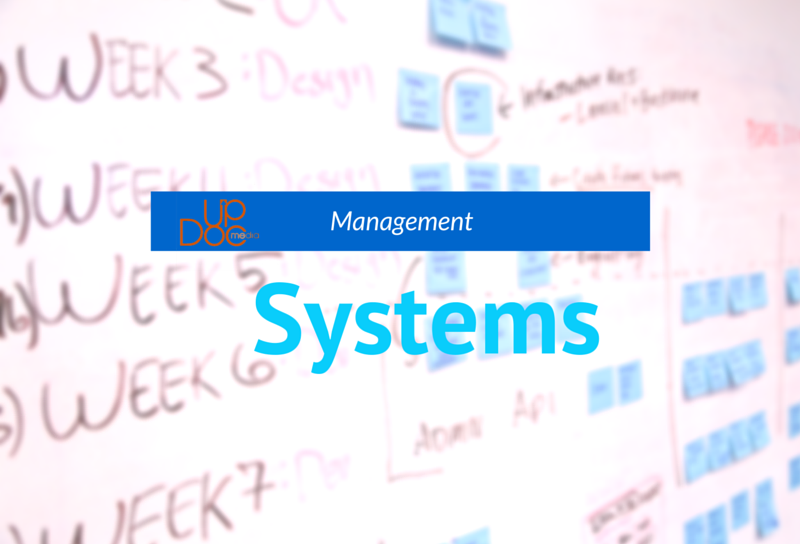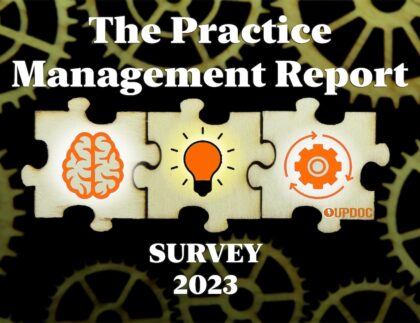

If one does a quick Google image search on “Management Systems” we typically get results such as the following:



But, what is a management system? Wiki it and you’ll find that:
In other words, a management system is a semi-flexible structure of approach to keep managers efficient. Typically, such systems are have multiple elements and dimensions linked by a step based approach with multiple feedback loops, checks, balances, and opportunities to modify the plan for future improvements.
Nevertheless, when you spin it all down, implementation does two things for managers:
- It empowers management to step back and allow for their processes and resources to run the show on their own. This requires trust that the employees will do what is best and requires that the manager relinquishes the instinct to micromanage.
- By letting the system run with minimal daily input from the manager, it allows for management to then attend to higher level decision making responsibilities such as strategy, planning for growth, and keeping the firm’s finances healthy.
Regardless of the management system or framework you use, wish to create for yourself, or that your company chooses to adopt, it is important that the implementation of any management system holds true to the following four steps:
- Keep to the Framework
- Have Strict Tripwire Thresholds
- Schedule Regular Assessments
- Drive Improvements from the Floor-level and End-user
1. Keep to the Framework
Keeping to the framework is the hardest part for most managers. This requires managers to literally let go and move forward hands free. Management systems have a framework for a reason; so that the manager isn’t tied up doing all the operational, day-to-day, and floor level duties that can be appropriately delegated to employees and floor level supervisors who probably have a better grasp of end-user needs as is. It’s a force of discipline and willpower. Nevertheless, managers that fail this first step will inevitably begin micromanaging again, missing the big picture which is in wanting of their attention.
2. Have Strict Tripwire Thresholds
Some management systems are rather vague and conceptual. While the more conceptual a framework is, the more likely it holds the flexibility in strategy, it also means it that such a framework tends to be poor in response time to tactical matters. Tripwire thresholds are critical elements which requires managerial attention beyond the authority and scope of the floor level supervisor. Typically, these are matters which can quickly escalate into an irreparable situation between the firm and its customers or partners. Typically, upper management will have already dictated certain values as well as worst case scenarios and management concerns to the firm itself. These elements will be the first layer of your tripwire topics. The key is training both yourself and your staff to respond appropriately. Until the matter reaches the critical threshold, a manager must not interfere. Doing so may usurp the floor staff and floor supervisor, creating insecurities and distrust among both the staff as well as the customer. The other side of this spectrum holds true as well. Staff must be very well in tune with when it is absolutely pivotal and critical to involve the manager immediately so that the situation does not indeed escalate.
3. Schedule Regular Assessments
In the busyness of a business, it can be easy to forget to perform a regular and comprehensive review on the health of your firm. Monthly and quarterly reviews are very important to make sure that the marketplace doesn’t move in a direction without your knowledge. It also ensures that your internal checks are in place, accurately and appropriately managed through more-or-less automated systems. A comprehensive review requires a lot of time and resources. It is easy to take a quick glance at your situation and feel that everything feels fine. While many firms may feel they are thorough with their introspection, the truth of the matter is that they could be far more detailed in their analysis. This can lead to management only taking surface considerations of the health of the firm without considering the deeper and more strategic situations looming down the road. Therefore, it is absolutely essential to be consistent and to thorough to the core.
4. Drive Improvements from the Floor-level and End-user
Once a regular assessment is completed and the results are compiled, it is important to identify areas of strengths, weaknesses, opportunities for improvement, and threats of demise. Once these ares are identified, it is best to involve floor level employees who interact with the end-user to become a part of the solution synthesis. It is in this manner, where relationships between floor staff and end-user are already in place, that your company can tap into the customer’s perspective for insight as to what solutions would serve best. This approach will also foster trust throughout the chain of command and serve to become implemented with superior accuracy as well as efficiency. Sadly, management often prefers to take the fifty thousand foot view and arbitrate solutions. As important as the big picture is, the details are quickly missed from such a vantage point. Therefore, by combining the input of your floor staff and your customer, managers can then systematically forge improvement plans to better their business with the details in proper place as well as the business strategy in close mind.
Some Closing Thoughts
One of my favorite things about management systems is that it is indeed a system; it flows in certain direction for certain purposes in a framework designed to take subjective elements out and objective approaches in. By doing so, it keeps management honest, much like a pilot is kept honest by their pre-flight check list. Some of the best managers in the world are at the top of their game, not because of talent and ability alone. It is because they rely upon rules not reflexes.
The final aspect of management systems I really appreciate is its role in preventing managerial burnout. The cost of replacing human resources is astounding; at least 30% of an employee’s annual compensation and upwards of 200% or more for exempt management type roles — the costs of executive replacements are astronomical. Being that turnover in the United States is roughly 15% annually, establishing a management system is something to seriously consider as not only a containment of cost but also as a way to retain good talent and good people.
So, if you’re flying blind and by feeling alone, it may be time to consider integrating a management system into your business; or, sitting down and carefully crafting one, customized for your specific business needs.









